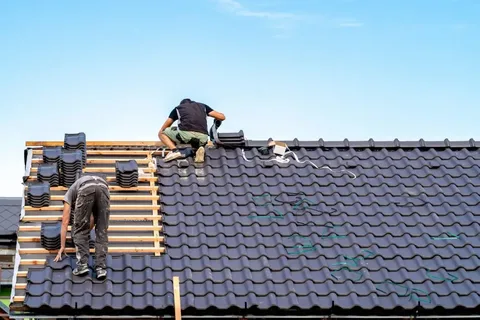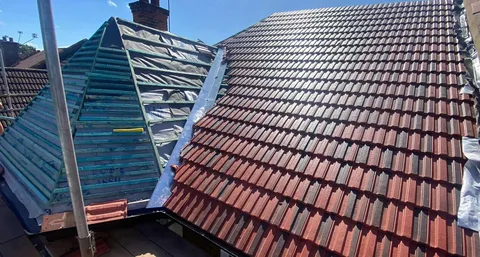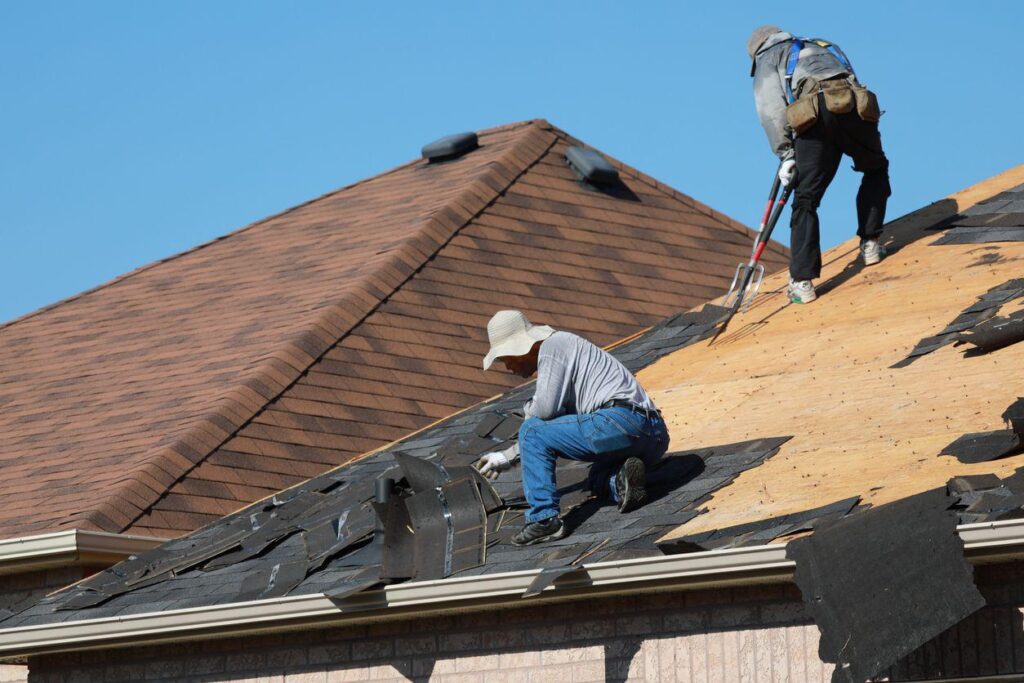Introduction
Roof installation safety tips every homeowner should know include the use of proper safety gear such as a harness, headgear, gloves and approved boots and glasses. Using a sturdy ladder with rubber feet and carefully accessing the roof while wearing the PPE prevents the risks of falls. Detailed planning about the project scope and assessing the weather conditions results in a smooth installation process. It’s best to work with a partner and have an emergency plan ready. Staying informed about the safety guidelines and best practices prevents mishaps and ensures a successful project.
Safety Protocols for Roof Installations: Essential Tips For Homeowners
Are you thinking about installing a new roof? Whether you are a DIY enthusiast or hiring contractors, knowing the roof installation safety practices is important to create a safe working environment at your home. Slips, falls and trips are common occurrences in the roofing sector and being safety conscious and understanding the importance of emergency readiness can help to minimize any mishaps and injuries. By staying vigilant about your safety, you can avoid unnecessary risks and have a smooth experience.
| Did you know? Employers will face higher OSHA (Occupational Safety and Health Administration) penalties for workplace safety violations in 2025 and onwards. |
Here is your guide for a safe roof installation process.
- Understand the Project Scope and Safety Guidelines
It is important for homeowners to understand the project scope and the challenges they can face during the installation process. Instead of overestimating their DIY skills, staying cautious and understanding the safety guidelines can result in a safer experience. Loose debris and damaged tiles, and uneven surfaces can all contribute to accidents. Planning helps you stay mentally prepared for any potential hazards and prevents injuries and falls.
- Assess the Weather Conditions
Adverse weather conditions expose one to danger. Rains make the roof slippery while high winds can unstabilize your footing and reduce visibility. An icy roof surface presents a slip hazard. Prioritize a flexible work schedule and set weather alerts to avoid unnecessary risks. Working early morning and late afternoon on a clear day protects you from harmful UV exposure.
- Wear PPE
Make sure you wear proper personal protective gear like a harness with a fall arrest system, a hard hat and glasses. Non slip rubber boots prevent slippage and are suitable when working at heights.
| Important fact According to the latest statistics released by the Bureau of Labor Statistics, 1 in 5 (20.8%) workplace deaths occurred in the construction industry in 2023. 38.5% were due to falls, slips and trips. Roofing contractors accounted for 26% of fatalities, with 110 deaths. |
- Use Proper Tools and Sturdy Ladders
Use proper tools and materials and secure them with a tool belt or harness to prevent them from falling. Sturdy ladders with rubber grip feet should be placed at a suitable place, at a stable angle, to climb and descend. Using the right tools and equipment results in safe working conditions.
- Work With a Partner
Access your roof from a safe point and avoid walking on fragile, weak spots and corners. It’s best to ask someone to assist you with the work. Avoid distractions and remain cautious about your surroundings.
- Emergency Preparedness is Important
Have an emergency plan ready in case of an accident to minimize injuries. To address any emergency scenario, homeowners must have an emergency kit ready and have a list of contacts and nearby hospital emergency services. Keep in mind the safe exit route to prevent any further accidents.
- Additional Tips
- Stay informed about the local building codes and regulations to ensure safety and compliance.
- When hiring professionals, ask them about their workplace safety and insurance board records.
- Ensure safe ladder practices like maintaining at least three points of contact while climbing (two hands and one foot or one hand and both feet).
- Homeowners Sharing Their Experience on Social Media
- Many homeowners share their roofing experience on social media sites like Facebook, Reddit and Quora, cautioning new DIY enthusiasts about working at heights and pitches.
- Many stress the importance of staying alert on roofs, aware of the surroundings and avoiding distractions.
- A key safety tip someone shared was about using ladder stabilizers and pads to prevent crushing the gutters.
- Investing in good harnesses and ropes is essential. Many suggest hiring professionals if you do not have the proper equipment, have no experience, and are uncomfortable working at heights.
| Fast Fact North America makes up 31% of the global roofing market. Growing at a CAGR of 4.9%, the market is expected to reach $41 billion by 2031. |
Conclusion
Working at heights can be dangerous. When installi,ng a new roof, homeowners must exercise caution, make a detailed plan, assess weather conditions, and use proper tools and equipment with PPE. Staying informed about the safety guidelines and the best practices ensures your safety and results in a successful project. If, however, you are uncomfortable working at heights, it’s best to ask someone to assist you or hire professionals with a good workplace safety record.
FAQs
What are the biggest worries of roofers during installations?
Navigating difficult weather conditions and safety hazards on a job site like falls and slips are the biggest problems roofers face.
What are the OSHA guidelines to ensure the roofer’s safety?
OSHA safety guidelines include getting fall protection training, using a personal fall arrest and restraint system (PFAS) and a combination of guardrails and a warning line system.
What PPE is required for roofing?
Hard hats, ANSI approved safety glasses, gloves and approved safety boots are necessary to ensure safety while working on roofs.



